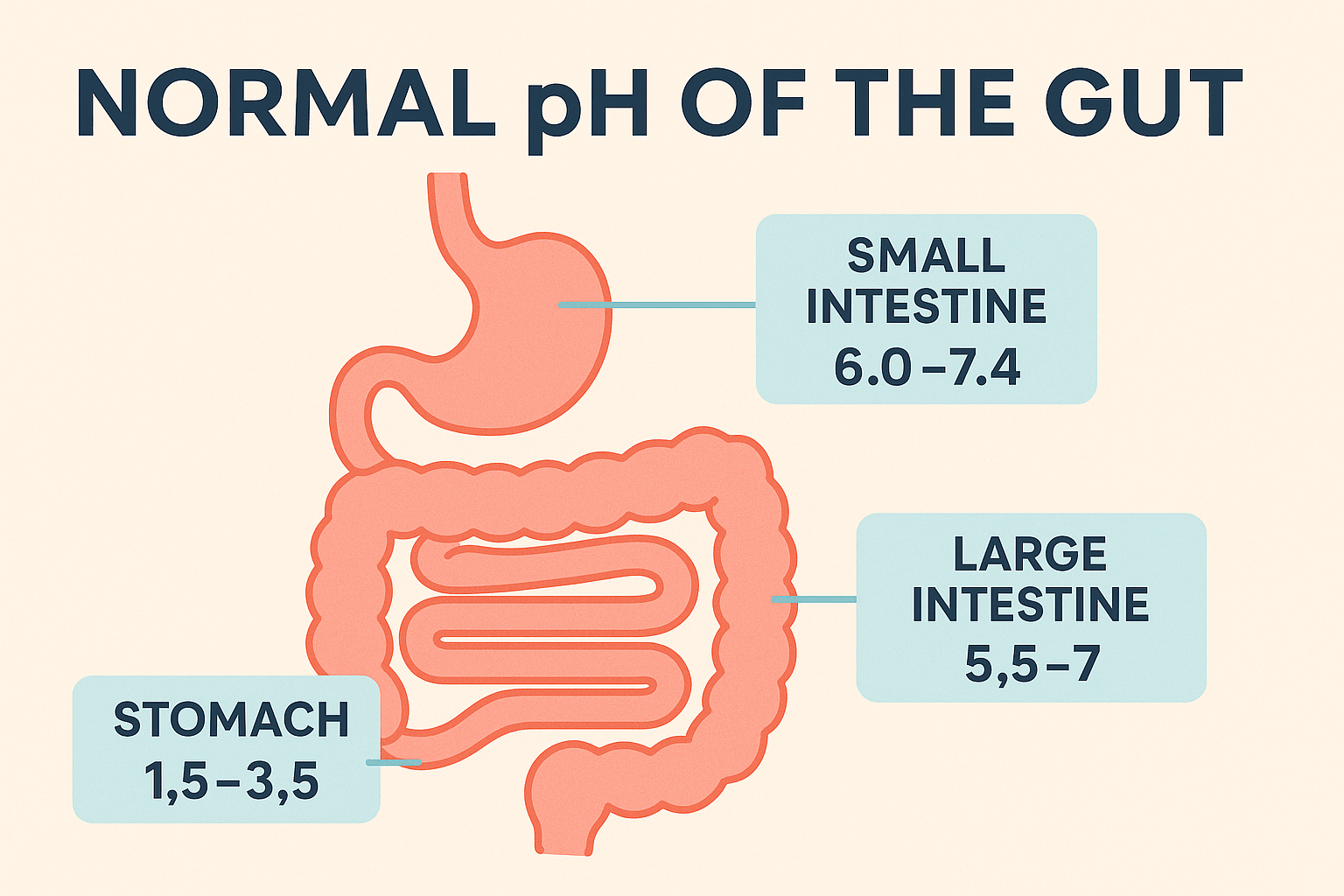
What is the Normal pH of the Gut? A Complete Guide
Discover the normal pH of the gut and how it varies across the digestive tract. Learn about the pH of... Read more
Ever wondered what is the ph of the intestine? The answer isn’t a single fixed number. The pH shifts across the digestive tract: the stomach is highly acidic (roughly pH 1.5–3.5) to kick off digestion, but as chyme moves into the small intestine the environment rises toward neutrality thanks to bicarbonate and bile. In the duodenum you’ll typically see pH around 6–6.5, with the jejunum and ileum trending toward 6.5–7.5 as nutrients are absorbed. The colon, where fermentation by microbes happens, often sits in a broader range around 5.5–7, influenced by fiber intake and microbial activity. This gradient matters because enzyme activity, nutrient solubility, and microbial metabolism all respond to pH, shaping how effectively you digest, absorb, and support gut health. Why this pH range matters for digestion, absorption, and gut health is more than academic. Many digestive enzymes are pH-sensitive, and pancreatic enzymes work best near neutral conditions, while bile salts emulsify fats more efficiently when the environment isn’t too acidic. Mineral absorption—think calcium, iron, and magnesium—depends on maintaining the right alkalinity window. The microbiome itself is pH-sensitive: a more acidic colon often supports beneficial short-chain fatty acid producers, whereas alkaline shifts can alter community structure in ways that may affect digestion and immunity. Diet is a powerful driver: high-fiber, fermentable substrates tend to lower colonic pH, while low-fiber patterns can elevate it and shift microbial balance. Understanding your gut pH profile helps explain symptoms like bloating, irregular stools, or nutrient gaps even when calories and macros look fine. To translate pH science into actionable insights, InnerBuddies offers a white-label Gut Health Operating System that companies can tailor to power their gut microbiome testing products. It features a Gut Microbiome Health Index (0–100) based on an exclusive IP deal with EAFIT University in Colombia, providing a concise snapshot of overall gut health. The platform also covers Bacteria Abundances—showing your top 40 bacteria and how you compare to a healthy cohort—for both presence and strength of influence. Bacteria Functions are categorized and labeled as positive or negative, with clear footing on how you stack up against healthy benchmarks in each functional area. Target Group Analysis dives into how the microbiome’s pathways relate to specific objectives like Healthy Aging, Endurance Sport, Power Sport, Skin & Hair Health, and more. All of this feeds into Personalized Nutrition Advice that aligns three days of food diaries with stool data to tailor recommendations, plus Personalized Probiotics and Prebiotics Advice that match your microbiome and goals. For consumers eager to explore, check out the InnerBuddies microbiome test and the InnerBuddies Gut Health Membership for ongoing guidance, or learn about opportunities to collaborate on the B2B partner program. Whether you’re seeking a consumer-style deep dive or a scalable business solution, InnerBuddies supports both paths with direct gut test solutions and flexible B2B options. The modular platform is designed to grow with your product, helping brands and clinics translate complex pH and microbiome data into clear, personalized actions that support digestion, absorption, and overall gut health.

Discover the normal pH of the gut and how it varies across the digestive tract. Learn about the pH of... Read more